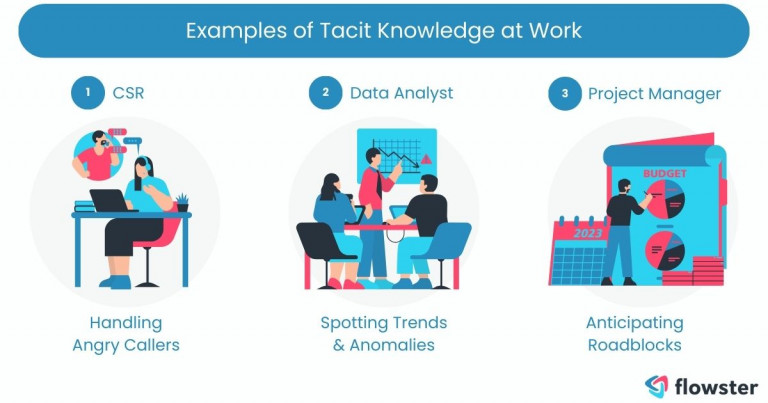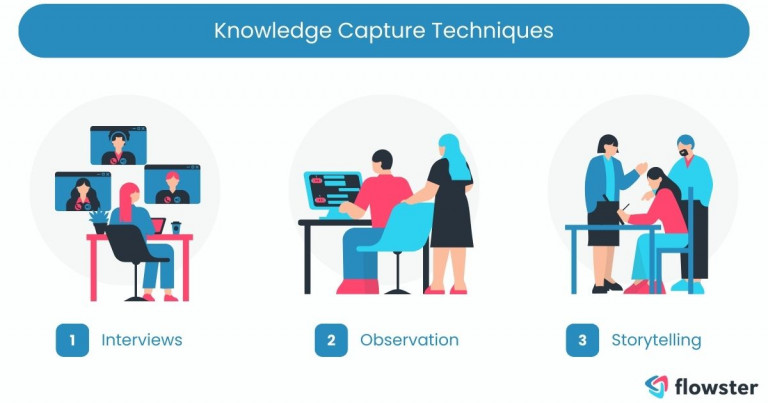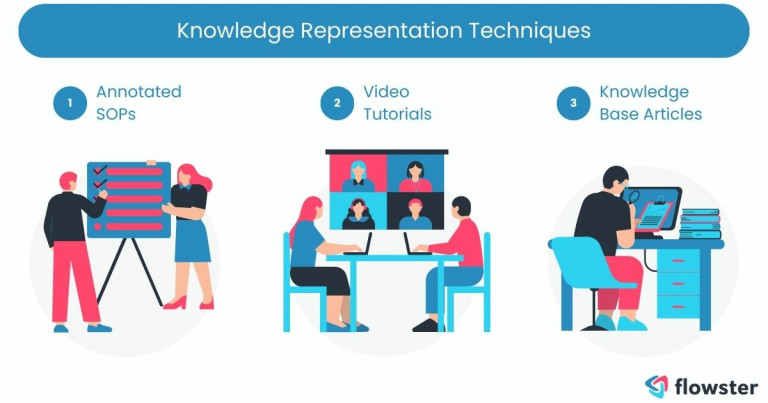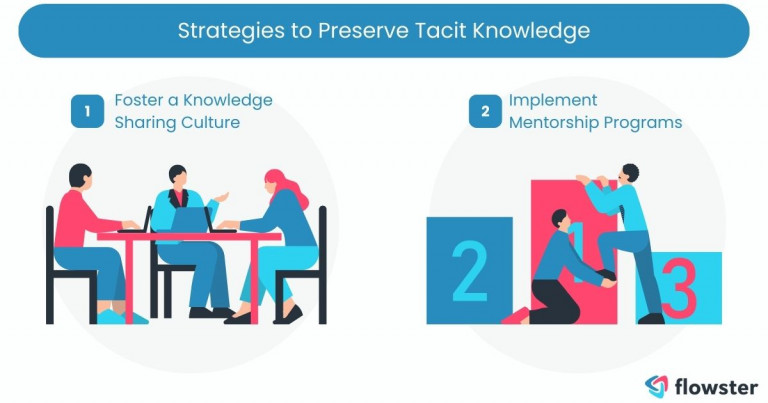Imagine this: A new employee, fresh out of training, confidently starts their first day on the customer service hotline. They’ve meticulously reviewed the Standard Operating Procedures (SOPs) for handling common inquiries. But when a frustrated customer calls with a complex issue, the written steps fall short. The SOP doesn’t address the specific situation, leaving the new employee flustered and unable to deliver the exceptional service your company prides itself on.
This scenario highlights the crucial, yet often overlooked, aspect of knowledge management: tacit knowledge. It’s the “how-to” that goes beyond the written word—the intuition, experience, and problem-solving skills that seasoned employees possess. Tacit knowledge plays a vital role in smooth operations, efficient task completion, and exceptional customer service. However, capturing this valuable knowledge and integrating it with existing procedures can be challenging.
This article tackles the often-overlooked challenge of documenting tacit knowledge. We’ll explore practical strategies for capturing the “how-to” expertise of your employees, ensuring your SOPs accurately reflect real-world practices, and ultimately, empowering your team to deliver exceptional results.
Article Outline
What is Tacit Knowledge?
Every workplace thrives on a hidden reservoir of knowledge—tactic knowledge. Unlike explicit knowledge, which can be easily written down in manuals or SOPs, tacit knowledge is the practical, experiential kind that often goes unspoken. It’s the “know-how” accumulated through years of experience, the intuition that guides us in tricky situations, and the ability to perform tasks efficiently without needing a script.
Why is Tacit Knowledge Important?
While explicit knowledge provides the foundation, tacit knowledge is the cornerstone of effective work. It empowers us to:
- Solve problems creatively: When faced with an unexpected challenge, tacit knowledge allows us to think outside the box and find ingenious solutions.
- Make informed decisions: Experienced employees leverage tacit knowledge to weigh factors, assess risks, and make sound choices that go beyond following a set of rules.
- Work smarter, not harder: Tacit knowledge often leads to the development of efficient workflows and clever shortcuts that save time and improve overall productivity.
Examples of Tacit Knowledge in Action
Think about the seasoned salesperson who can close a deal with a subtle shift in their approach, or the technician who can diagnose a complex issue based on a barely audible sound. These are all examples of tacit knowledge at work. Here are some more relatable examples you might encounter in your own workplace:
- A customer service representative who can diffuse an angry caller with a calming tone and the right words, even in the absence of a scripted response,.
- A data analyst is someone who can spot trends and anomalies in datasets based on their experience, even if the specific pattern isn’t explicitly outlined in the analysis procedure.
- A project manager who can anticipate potential roadblocks and course-correct efficiently based on their past experiences with similar projects.
Tacit knowledge permeates every role and function within an organization. It’s the magic ingredient that elevates good work to exceptional. But can this intangible expertise actually be documented? We’ll explore that question in the next section.

Can Tacit Knowledge Be Documented?
Capturing the full depth of tacit knowledge can feel like trying to bottle lightning. By its very nature, it’s often implicit and difficult to articulate in a formal way. However, this doesn’t mean we’re stuck! Even capturing aspects of tacit knowledge can significantly improve your SOPs and knowledge transfer within your organization.
The key lies in recognizing that tacit knowledge isn’t a single entity, but rather a collection of insights, experiences, and best practices. By strategically tapping into this resource, we can bridge the gap between theory (written procedures) and real-world practice.
Let’s explore some practical strategies for documenting tacit knowledge in the next section.
Strategies for Documenting Tacit Knowledge
While capturing the full essence of tacit knowledge can be a quest, there are effective strategies for harnessing its power. Here, we’ll explore various techniques to document tacit knowledge and weave it into the fabric of your organization’s knowledge base.
A. Knowledge Capture Techniques
The first step is to extract the valuable insights residing within your employees. Here are some effective methods for capturing tacit knowledge:
- Focused Interviews: Schedule interviews with experienced employees, focusing on specific tasks or procedures. Guide the conversation to elicit their thought processes, decision-making rationale, and the unspoken rules they follow to achieve success.
- Observation: Don’t underestimate the power of watching! Shadow high-performing employees as they complete tasks. Observe their workflow, identify unspoken best practices, and pinpoint areas where procedures could benefit from the addition of tacit knowledge.
Storytelling: Encourage employees to share work-related stories. These narratives can reveal a wealth of tacit knowledge, from creative problem-solving strategies to the thought processes behind successful outcomes. By capturing these stories, you can distill valuable tacit knowledge for future reference.

B. Knowledge Representation Techniques
Once you’ve captured these valuable insights, the next step is transforming them into a usable format. Here are some methods for documenting tacit knowledge and integrating it into your knowledge base:
- Annotated SOPs: Revise existing Standard Operating Procedures (SOPs) by incorporating annotations based on your captured tacit knowledge. This could include adding explanations for specific steps, decision trees for complex situations, or even a dedicated “Best Practices” section based on employee insights.
- Video Tutorials: Short video tutorials can be powerful tools. Film experienced employees performing tasks while explaining their thought processes and decision-making along the way. These video tutorials can serve as a valuable reference for new hires and a refresher for seasoned employees.
- Knowledge Base Articles: Develop well-structured knowledge base articles that incorporate the captured tacit knowledge. These articles can document troubleshooting tips, decision-making frameworks, and best practices gleaned from employee experience.

By combining these knowledge capture and representation techniques, you can effectively document tacit knowledge and ensure your SOPs and knowledge base reflect the real-world expertise that drives success.
Preserving Tacit Knowledge
While capturing tacit knowledge is a crucial first step, preserving it over time is equally important. Here are some strategies to ensure this valuable asset continues to thrive within your organization:
- Foster a Knowledge Sharing Culture: Cultivate a workplace environment that encourages open communication and knowledge exchange. Recognize and reward employees who actively share their expertise with colleagues. This can be achieved through incentive programs or recognition initiatives that celebrate knowledge sharing.
- Implement Mentorship Programs: Mentorship programs provide a powerful platform for knowledge transfer between experienced and new employees. By pairing seasoned professionals with newcomers, you create opportunities for tacit knowledge to be passed down organically, fostering a culture of continuous learning and development.
By fostering a knowledge-sharing culture and implementing effective mentorship programs, you can ensure that tacit knowledge isn’t lost with employee turnover. This empowers your team to leverage the collective wisdom of your organization, driving innovation and success.

The Power of “How-To”: Unlocking Success Through Documenting Tacit Knowledge
In today’s dynamic work environment, capturing the full spectrum of knowledge within your organization is essential. While written procedures provide a solid foundation, documenting tacit knowledge unlocks a hidden treasure trove of experience-based wisdom. By incorporating these unspoken “how-to” secrets into your SOPs, you ensure they accurately reflect the real-world practices that lead to success.
We’ve explored effective strategies for documenting tacit knowledge, including conducting focused interviews with experienced employees, observing work processes to identify best practices, and encouraging storytelling to unveil problem-solving strategies. We’ve also discussed how to translate captured insights into actionable tools through annotated SOPs, engaging video tutorials, and well-structured knowledge base articles.
Finally, we emphasized the importance of preserving tacit knowledge over time through a knowledge-sharing culture and mentorship programs. By implementing these strategies, you can ensure that the collective wisdom of your team continues to empower your organization for years to come.
Don’t let valuable “know-how” reside solely in the minds of your employees. Take action today and unlock the power of documenting tacit knowledge. By incorporating these strategies, you can bridge the gap between theory and practice, propelling your organization towards greater efficiency, productivity, and success.
Transform Your Business with Flowster's AI-Driven Automation
Need an Easy SOP Documentation Tool?
The Flowster Marketplace has pre-built workflows and SOP templates, and Flowster uses AI to make process documentation easy. These templates are versatile and easy to customize for your business needs.
Do you need assistance? Custom workflows are designed by our quality and improvement experts using our “Done for You” service. Our team can help you create SOPs from scratch that match your business processes and goals.




